Plant Lovers' Almanac: Applause for Pawpaws, Ohio's native fruit tree
Spring is in full swing, with plenty of soil moisture, warming temperatures and frost damage hopefully fading in the rearview mirror. Ferns are unfurling, wildflower foliage and blossoms carpet the forest floor, and the days of heavy coats pass by. I hope.
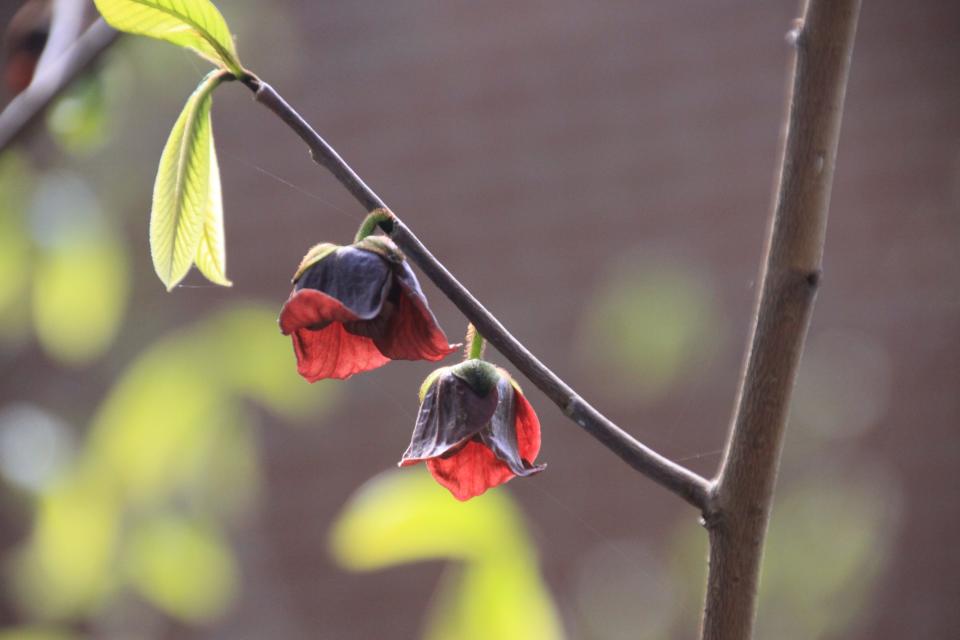
Pawpaw
Asimina biloba, our state native fruit tree, is the northernmost plant in the Annonaceae, the soursop or custard-apple family. My favorite characteristic of pawpaws — more common in southern Ohio and more southerly states — is the flowers, wonderfully described by horticulturist Michael Dirr as ”lurid purple flowers, rarely seen by the uninitiated.”
Though I recently read an article that maligned pawpaw flowers, I think of them as some of the most beautiful of all native trees. Yes, they are unnoticed unless you are looking for them as they come out right now before their leaves emerge. Yes, the flowers are an unusual dark color unless brightened by the sunlight as viewed from below, and their aroma, beloved not by the birds, bees and butterflies, but by flies and carrion beetles, is definitely not lilac-like.
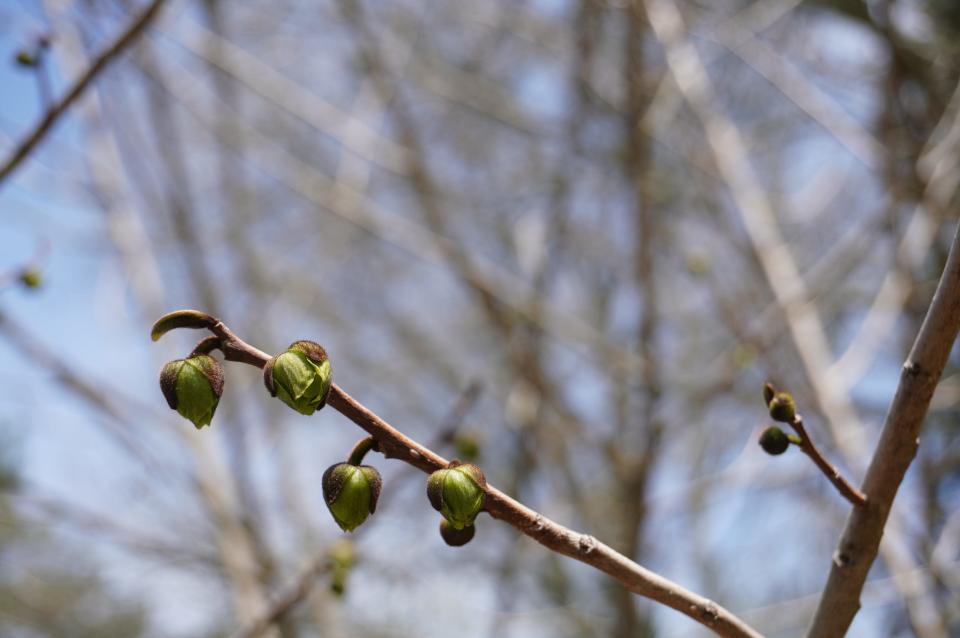
As for the fruits, they were once a food source for mastodons before these “ghosts of evolution,” extinct, elephant-like mammals failed to survive their fitness test. Pawpaw fruits were an important food source for the Lewis & Clark explorers on their travels west and provided feasts in their famine days.
They have something of a sickly-sweet flavor. The fruits are a good source of vitamin C, but avoid unripe fruits, twigs and seeds, as they are a source of neurotoxins and alkaloids, like other plants in the Annonaceae such as sweetsop and soursop (none growing here).
The edible ripe fruits are becoming more and more popular in Ohio and the eastern United States, especially as flavor-enhancers in beers and ciders, and Graeter’s Ice Cream once even made pawpaw ice cream for a banquet of pawpaw fanciers.
Enjoy the large banana tree-like greenish-blue leaves, the stately form in the sun and patches of interconnected trees in shady woodlands, the taste of the ripe fruit, and the very cool polished large seeds (do not eat).
And learn more: Register for the Ohio Pawpaw Conference on May 21 at Ohio State University’s Piketon Centers in southern Ohio and the annual Ohio Pawpaw festival scheduled for Sept. 16 in Albany in southeast Ohio's Athens County.
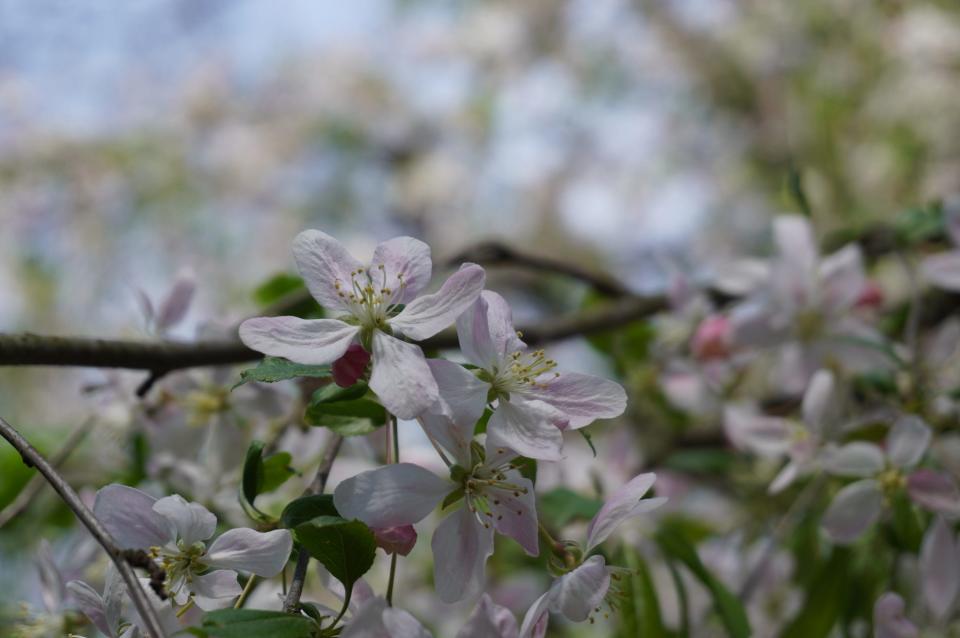
Crab apples revisited
Last week I talked of the early-week emergence of the spectacular blooms of “Strawberry Parfait” crab apple at OSU’s Secrest Arboretum in Wooster. It was true, until it was not. On Thursday morning of last week the temperature in Wooster plunged to 24 degrees — and “Strawberry Parfait” flowers froze, then melted.
However, all was not lost.
First of all, the trees are fine; it is just the blossoms (and subsequent fruits) that were lost, and for crab apples loss of fruit is not nearly as important as on apples, most of which were spared since they typically come out a little later than crab apples.
Secondly, among crab apples (apples that are less than 2 inches in diameter at maturity), “Strawberry Parfait” is an early bloomer, so many crab apple types at Secrest’s Crablandia were still in protective buds. A good example is the Canadian cultivar “Rosseau,” a large specimen at Secrest that bloomed spectacularly this week. Other fine specimens included “Sargentina,” a dwarf-dwarf crab apple that interestingly shows sunny yellow stamens emerging from the buds like night stars before the white petals and the full flowers emerge. Also, in my backyard the soft pink petals of the weeping crab apple “Louisa” were particularly graceful this year, as were the intense pinks and corals of “Candymint,” another Sargent type.
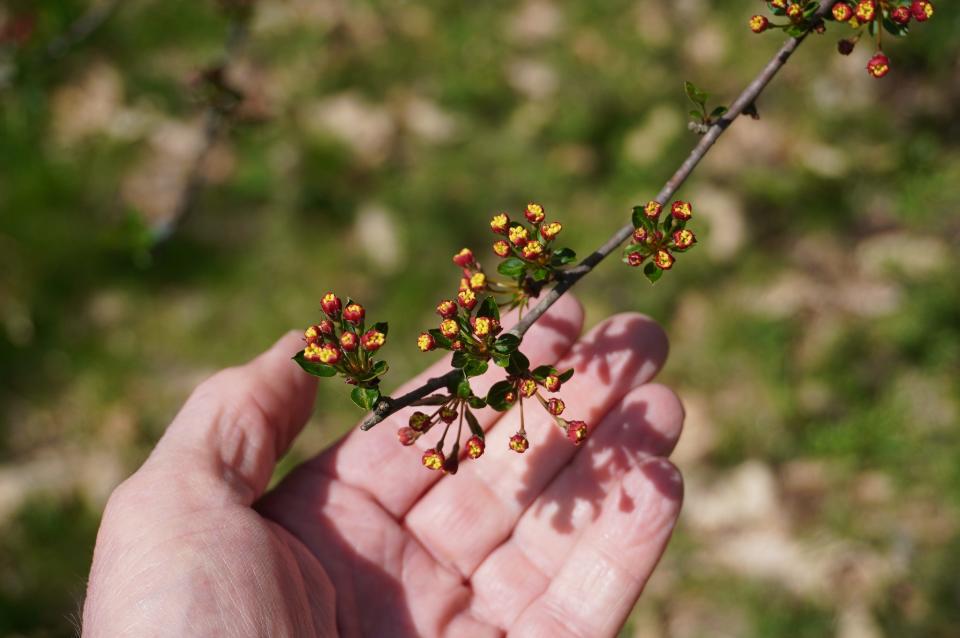
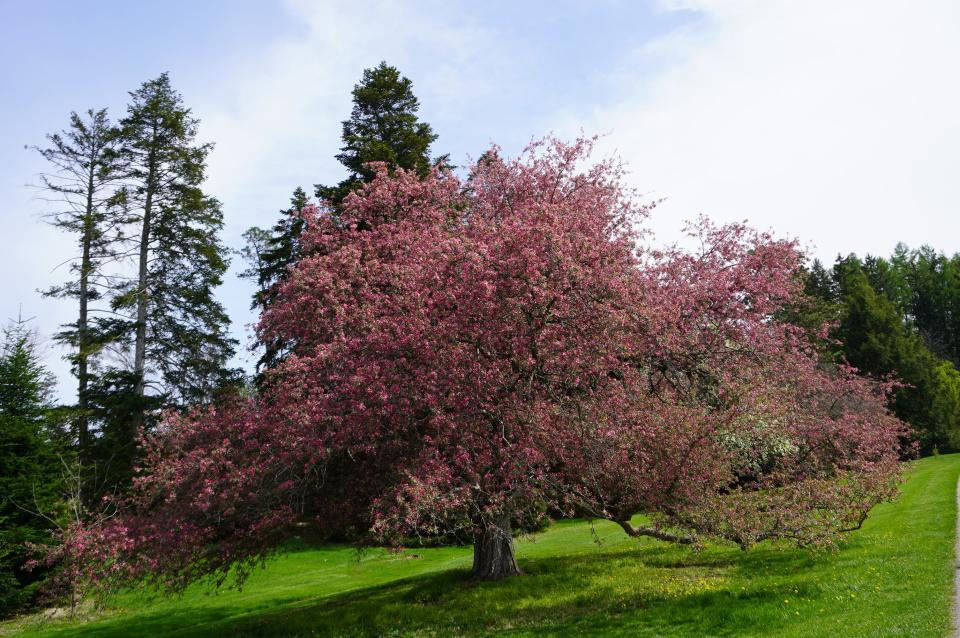
Bird magic
My wife is enjoying the bird-watcher’s phone app Merlin from the wonderful Cornell Lab of Ornithology. You hold your phone up to match up the bird calls you hear with the birds you sometimes see.
It helped us identify the tree swallow that sat upon a bluebird house at Secrest Arboretum recently. Apparently that is common behavior for this aggressive bird that breeds in cavities, including those of houses humans purpose for other birds. It is an attractive blue-green on top with white underneath.
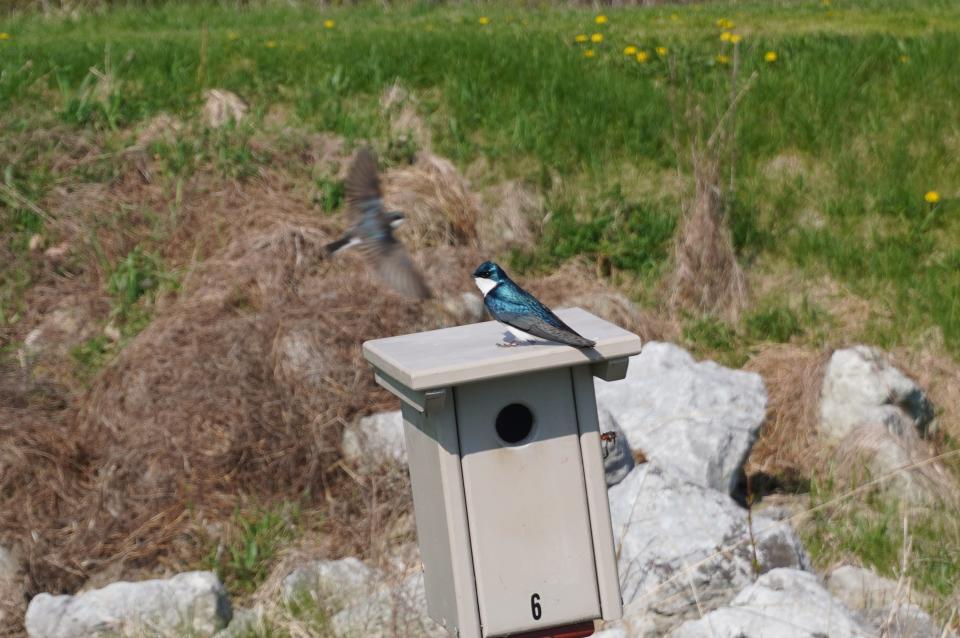
This past Sunday Merlin identified the call of a Baltimore Oriole, though we did not espy this orange and black bird (the baseball version of which we will not see at Progressive Field until Aug. 30). This inability to caller-ID birds is what has kept me for years from becoming a competent bird-watcher; I prefer wildflowers, since they do not move around and I can spend more time identifying the details. Merlin, though, is a great magician’s assistant.
The Merlin app is named for a small falcon, and it reminds me of one of my favorite stories in “The Once and Future King” in which Merlin the magician is teaching the king-to-be Arthur with the ultimate in experiential learning. Want to know about a fish? — Merlin turns Arthur into a fish for a swim; or a bird? — he transforms Arthur into a soaring falcon. We all need a magician as a tutor!
Speaking of birds, I spent an hour recently in a rocking chair with my 3-year old grandson, Miles, paging through a wonderful book: “Avian Illuminations: A Cultural History of Birds” by Boria Sax. It focuses on the role of birds in history, art, philosophy, religion. Think about how much birds figure into our world and imagination. The Phoenix arising from the ashes. The Thunderbird of Pacific Northwest Haida culture. The Harpy of Greek mythology.
The dove of peace. Passenger pigeons. Our bald eagle national symbol. Tony Soprano’s duck obsession. The swooping murmurations of starlings. The imagined wisdom of owls. Ravens feeding Elijah in the wilderness, evermore. Vincent Van Gogh’s ‘Wheat Field With Crows.” Alfred Hitchcock and the looming birds, as nature turns against us. Cave paintings. And the literature and images in this book, from the painting of the mythical rukh flying with an elephant, to real-life photos of a swan in flight, of an arctic tern on its long, migration sortie, to Claude Monet’s “I would like to paint the way a bird sings.” And I still would be “thrilled to the marrow” to see a chestnut brown canary/a ruby throated sparrow, of Stephen Stills' song “Suite: Judy Blue Eyes.”
To close, from the 19th and 20th century American naturalist and writer John Burroughs: “The very idea of a bird is a symbol and a suggestion to the poet. A bird seems to be at the top of the scale, so vehement and intense in his life — large-brained, large-lunged, hot, ecstatic, his frame charged with buoyancy and his heart with song.“
Jim Chatfield is a horticulture educator and professor emeritus at Ohio State University Extension. If you have questions about caring for your garden and other topics, write to chatfield.1@osu.edu or call 330-466-0270. Please include your phone number if you write.
This article originally appeared on Akron Beacon Journal: Plant Lovers' Almanac: Look for blooms and fruit of Pawpaw trees, crab apples

